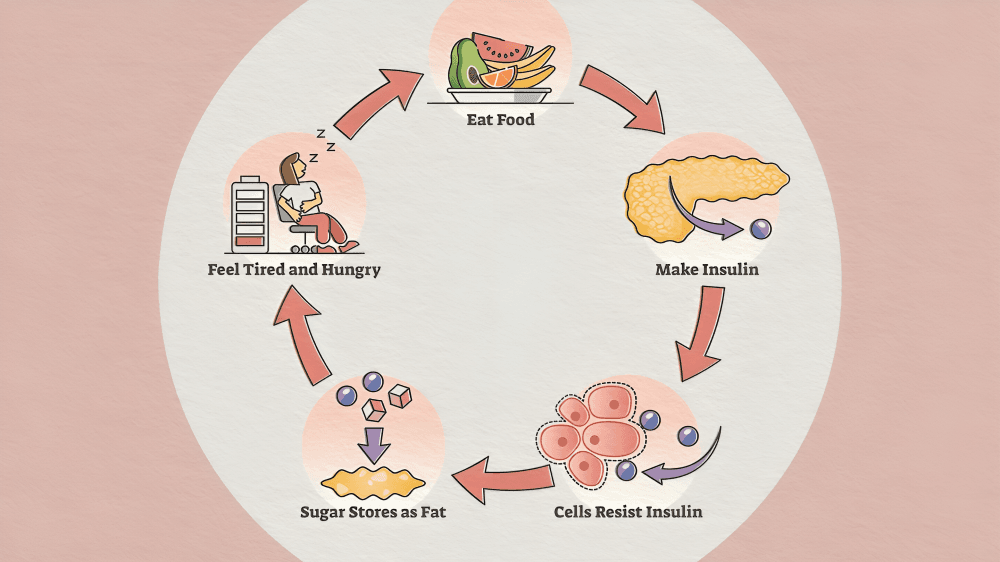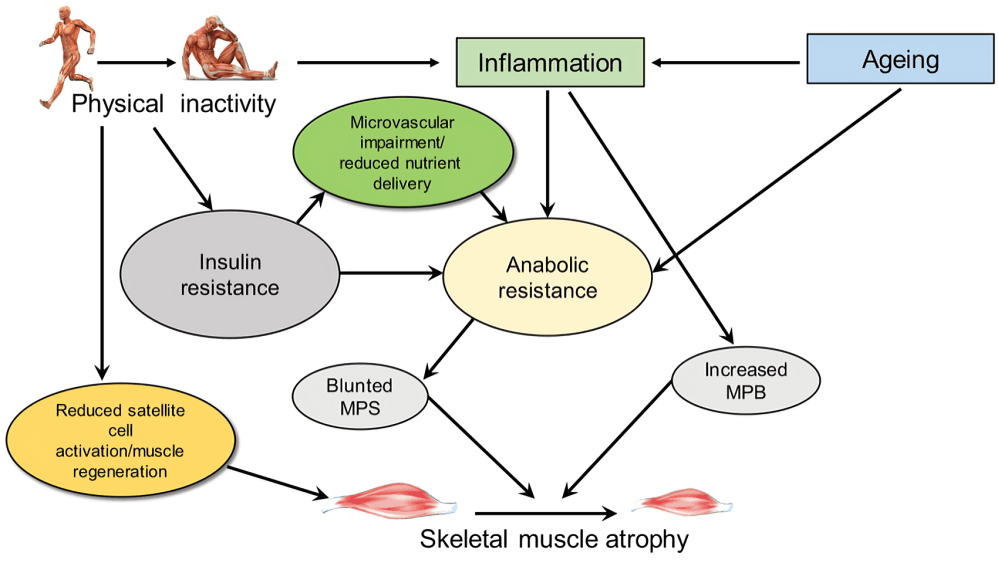
“
The connection between obesity and diabetes is one of the most studied and concerning health topics today. Obesity dramatically increases the risk of developing type 2 diabetes by contributing to insulin resistance and inflammation.1
1
”
In ancient medicine, physicians like Hippocrates noticed that excessive body fat often led to persistent thirst and fatigue—early signs now recognized as symptoms linked to type 2 diabetes. 1
Obesity increases fatty acids in the bloodstream, which can disrupt insulin signaling pathways, leading to cells becoming less responsive to insulin and contributing to type 2 diabetes. 2
Fat stored in the abdominal region is particularly harmful, as visceral fat produces hormones and inflammatory substances that significantly impair insulin function and blood sugar regulation. 3

People with obesity are up to 80% more likely to develop type 2 diabetes due to chronic low-grade inflammation that interferes with insulin sensitivity over time.
Insulin resistance develops when fat cells become enlarged and dysfunctional, making it harder for glucose to enter the cells, forcing the pancreas to work harder to produce insulin. 4
Studies show that even modest weight loss, around 5% to 7% of body weight, can dramatically reduce the risk of developing type 2 diabetes in people with prediabetes. 5
Obesity triggers the release of cytokines—chemical messengers from fat tissue—that can block insulin receptors on cells, leading to higher blood glucose levels and insulin resistance. 6
The hormone leptin, which regulates hunger, becomes less effective in obese individuals, leading to overeating and further weight gain, compounding diabetes risk. 7
Excess fat can build up in the liver, causing non-alcoholic fatty liver disease, which is strongly associated with insulin resistance and a heightened risk for type 2 diabetes. 8
Obesity-related sleep apnea can contribute to metabolic disturbances, including insulin resistance, by reducing oxygen supply and increasing stress hormone levels during sleep. 9

The pancreas may eventually fail to produce enough insulin when constantly overworked due to obesity-induced insulin resistance, triggering full-blown type 2 diabetes.
Inflammatory proteins released by fat cells can also damage pancreatic beta cells directly, impairing the body's ability to secrete sufficient insulin for glucose control. 10
Obese individuals often exhibit elevated levels of triglycerides, which are linked to insulin resistance and increased risk for cardiovascular diseases alongside type 2 diabetes. 11
Chronic stress, common in obesity, raises cortisol levels, which not only increase blood sugar but also encourage fat storage—both factors that fuel type 2 diabetes development. 12
Adiponectin, a hormone that enhances insulin sensitivity, is usually found in lower levels in obese individuals, making it harder for their bodies to use insulin effectively. 13

Physical inactivity, common among those with obesity, leads to muscle loss and metabolic slowdown, both of which worsen insulin resistance and increase diabetes risk.
Excessive calorie intake from high-fat, high-sugar foods leads to fat accumulation and increased blood glucose, forming a cycle that escalates the progression toward diabetes. 14
Obesity is also linked with polycystic ovary syndrome (PCOS) in women, which is associated with insulin resistance and an elevated risk for type 2 diabetes. 15
Bariatric surgery, which leads to rapid weight loss, has been shown to reverse type 2 diabetes in many cases by improving insulin sensitivity almost immediately. 16
Modern doctors emphasize that reversing obesity through balanced diets, physical activity, and behavioral therapy remains the most effective strategy to reduce type 2 diabetes risk. 17


